If you are getting ready to take a trip to relax a bit, not too far away and maybe spending the right amount, this is the time to go to Budapest. Which on Nov. 17, 2023, celebrated 150 years of its unified administrative identity. The capital ofHungary, nestled on the banks of the Danube, will amaze you with its artistic-architectural beauties, but, above all, when you talk about Budapest, you cannot fail to mention its thermal baths. Here is the largest spa in Europe and the highest concentration of such springs, 123. Already the Romans settled here, building thermal baths that can still be seen today, but passing of course through the period of Turkish rule, which saw ideal habitat for their baths here, it was in the nineteenth century that the development of the beneficial waters became massive. Twelve spas and Turkish baths now fall under a municipal circuit from whose site you can draw all the logistical information. We present the ten main resorts in this article.
The most famous, with a mammoth building, the first block of which dates back to 1881, designed by Hungarian architect Gyozo Czigler, are the Széchenyi thermal baths: three large steaming pools outdoors (at 37 degrees Celsius) and 12 indoors at different temperatures according to function. In general, in addition to the muscle-decontracting heat, benefit is found in the presence of calcium, fluoride, metaboric acid and sulfate, which help with joint problems such as chronic arthritis. They are open year-round (even the outdoor ones) and the ticket cost averages 18 euros but varies depending on the time of day chosen (morning, afternoon, daily) and services (cabin use, locker use, with or without towel and slipper rental). Undoubtedly then a very affordable price for any tourist, certainly less than other spas in Europe. But the success, cost aside, is also due to the fact that they are beautiful. One dives into other historical eras. As early as the late nineteenth century these spas were attracting people from all over so much so that very quickly the potential of a spa was sensed and so buildings were constructed one after another to complete the construction of the complex in 1913. The name chosen was that of one of the greatest figures in Hungarian history, István Széchenyi. The thermal water was first captured thanks to a 924-meter-deep artesian well dug by Vilmos Zsigmondy; today that well is 1,250 meters deep and brings water to the surface at an impressive 76 degrees. The various thermal waters are used to treat rheumatic pains, arthritis, nervous disorders. Lots of body care treatments are offered from Finnish sauna to thalassotherapy, from massages to Turkish baths. Special features include the spa where you can take baths in wooden tubs with beer mugs to be filled on tap. The style is neo-Baroque, which makes grandeur its majestic splendor, with domes, statues, friezes, columns and arches, mosaics and decorations, ornaments and furnishings that have been so carefully detailed as to look almost like a royal palace. At the edge of those large open-air pools, as in a square of a world capital, one breathes the internationality that it soon gained after independence after Soviet influence, becoming the spa town par excellence. And here, poolside, all languages are spoken and history is breathed.
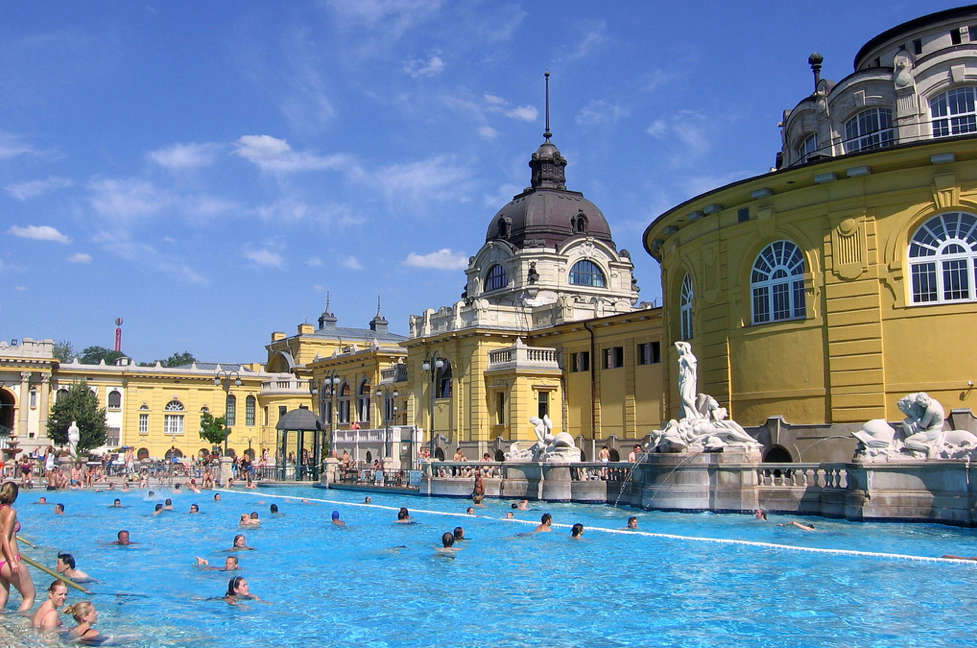
In a beautiful Art Nouveau style, the Gellért Baths are unanimously considered the most beautiful and elegant in the water capital, none competing with its atmosphere of class and style and its historical reputation. The building itself is one of the most important pieces of Hungarian Art Nouveau, and the ornamental windows in its main hall were created by Miksa Róth. Built in 1918 (along with the adjacent hotel) they are located in the city center and do not have the crowds of the Széchenyi; they are both from the era of the Austro-Hungarian monarchy. However, it is ideal to go there on weekdays. First and foremost striking are the colors, details such as pool bottoms, mosaics, stained glass windows, ceramics, statues and Zsolnay porcelain that enrich the rooms between colonnades and terraces. As the baths site reports, this water was enjoyed here as early as the 15th century, and these springs were later favored even by the Turks, as they were larger and hotter than the Buda baths of the time. In the 17th century, the site was called SárosfürdÅ‘, meaning ’mud bath’ because of the fine spring silt that was pushed up along with the spring water and deposited at the bottom of the pools. The Gellért Thermal Bath and Hotel were world-renowned and popular with foreigners, and was expanded in 1927 with the wave bath and in 1934 with the effervescent bath. The special outdoor pool is also equipped with a mechanism for producing artificial waves, and the 4 indoor thermal pools have a temperature ranging from 36° to 40°, an indoor pool with a temperature of 26°, an outdoor pool and an outdoor thermal pool. The water from 118 sources is rich in sodium, calcium carbonates, magnesium, hydrogen and sulfate-chlorides, and is a panacea for respiratory diseases, circulation problems and inflammation. One can also come here to treat asthma.
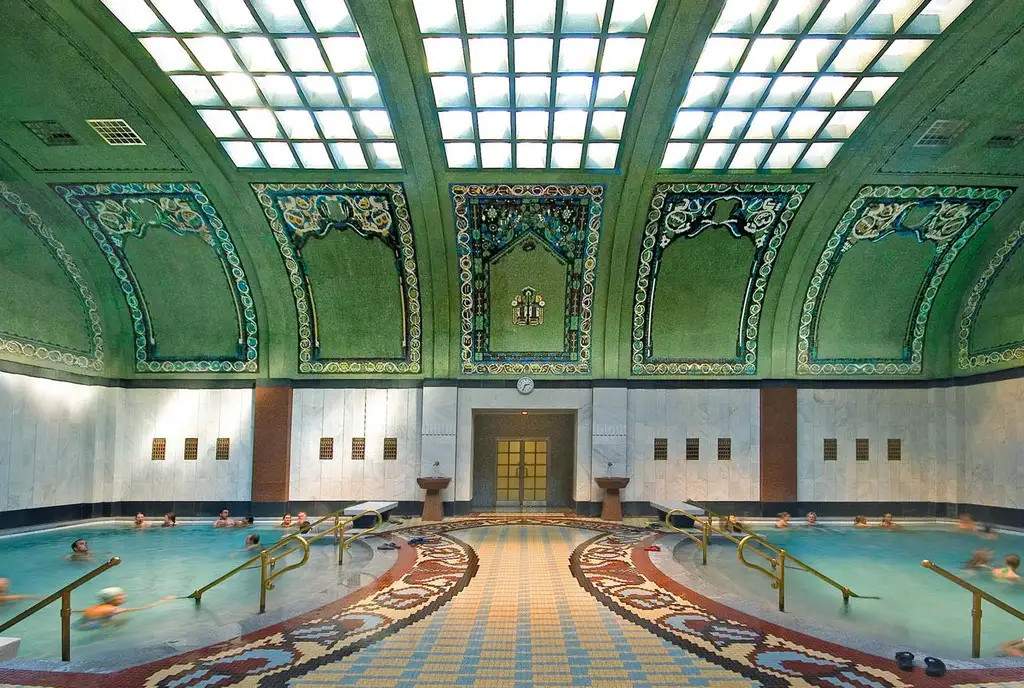
A spa like a Marian shrine with ex-votos hanging on the walls. We are talking about Lukács Spa and its plaques posted on the walls of people who found benefit from the spa treatment sent messages of thanks and testimony. Illustrious people, crowned heads, and intellectuals with chronic inflammation of the spine, of arthritis, post-traumatic sequelae, and rheumatic diseases came here from all over the world to take advantage of the hot fonde and its benefits. The water that with temperature between 21° and 49° is composed of calcium, magnesium and hydrocarbon; the hottest waters also contain fluoride, chloride and sulfur. They are less touristy than the others in the city and a visit therefore can always be taken at a leisurely pace. Its history dates back as early as the 12th century when the knights of the Order of St. John engaged in curing the sick settled in the area of today’s Lukács Baths, followed by the orders of Rhodes and Malta, with orders to build facilities next to their thermal monasteries to cure the sick. During the period of Turkish influence the power of the water was used to generate power with mills and maginate grain and produce gunpowder. In 1884, Fülöp Palotay gave new meaning to the facility by initiating a series of interventions that also included the spa hotel, the establishment of a modern hydrotherapy department and swimming pool. It should be noted that even today there is a distinction of male and female areas. Since 1937 there has also been a mineral water room to drink for its “exceptional” qualities in cases of intestinal and stomach diseases. Today they also have carbonic acid baths, dry and steam saunas, and a Finnish sauna. In addition, the facility provides various types of services, including medical, refreshing, and podiatric massages, as well as mud treatments and psychotherapeutic treatments. In 1979, the first department for complex spa facilities (day hospital) was established. In 1999 the outdoor pools were modernized and a luxury pool was created, equipped with a whirlpool corridor, underwater effervescence, cervical shower, back massage with water beam hidden in the seat banks, whirlpool, geyser, effervescent bed. The Lukács Baths are considered the most authentic of the famous baths (although to be sure not to have too many people around it is a case of going at 6 a.m.) but also as the artists’ baths, in fact many Hungarian writers, poets and literati in the 19th and 20th centuries came here to swim and cure themselves. Very nice is the panoramic view from the rooftop terrace.
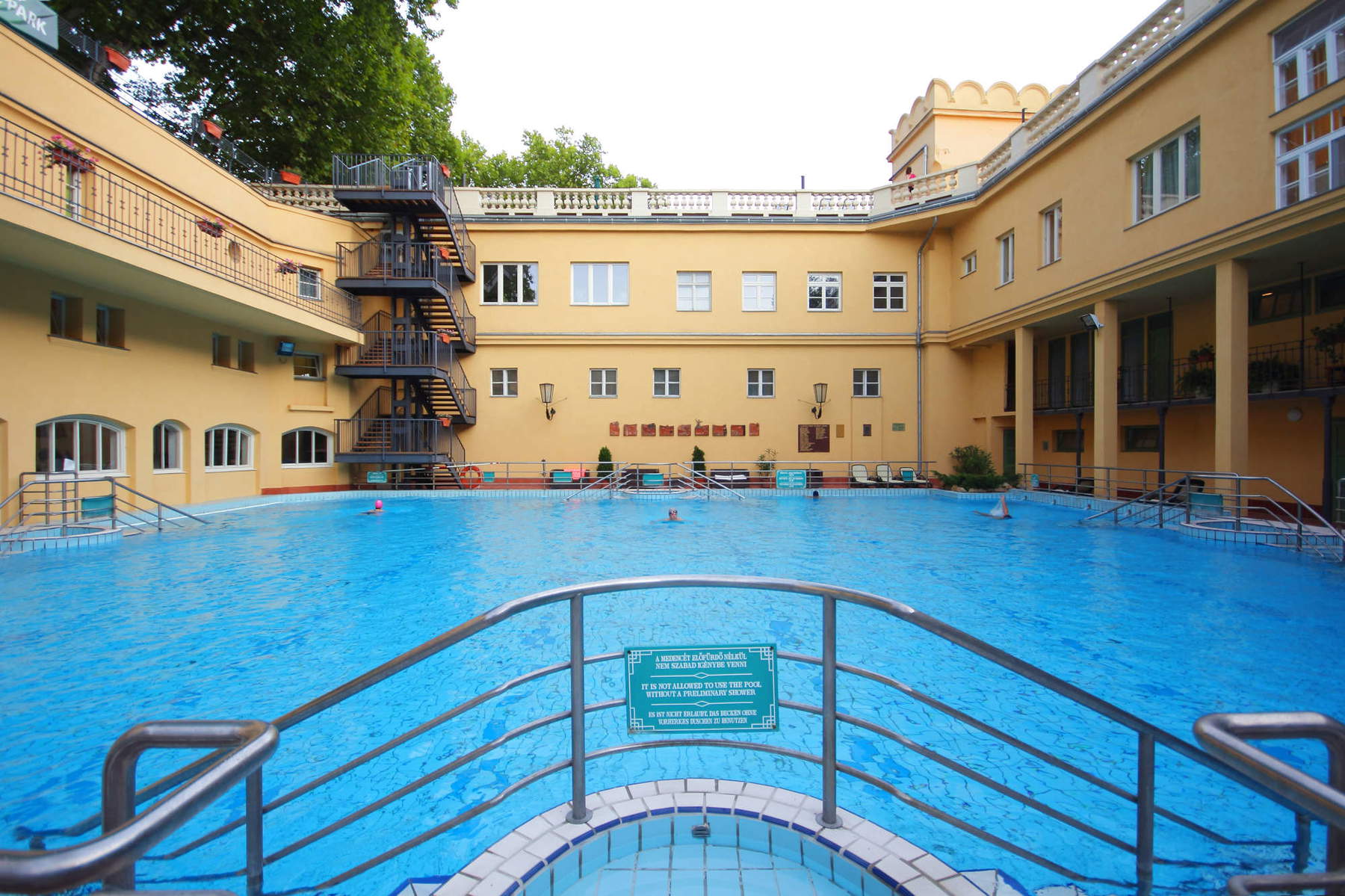
These are the spas least frequented by tourists-Széchenyi, Gellért, Rudas, and Lukács are the most popular-so if you want a less chaotic and more authentic experience Dandár is for you; here you are more likely to meet real Hungarians. It is the refuge of Hungarian workers in the Pest area. A small spa complex that stretches in the Ferencvaros district between new residential areas and old industrial complexes. Absolutely a must try for hot water lovers. The architectural design for the public bath on Dandár Street was prepared by Ferenc K. Császár, commissioned in 1930 and then transformed in 1936. In 1978, however, following careful reconstruction, it was put into operation as a spa.
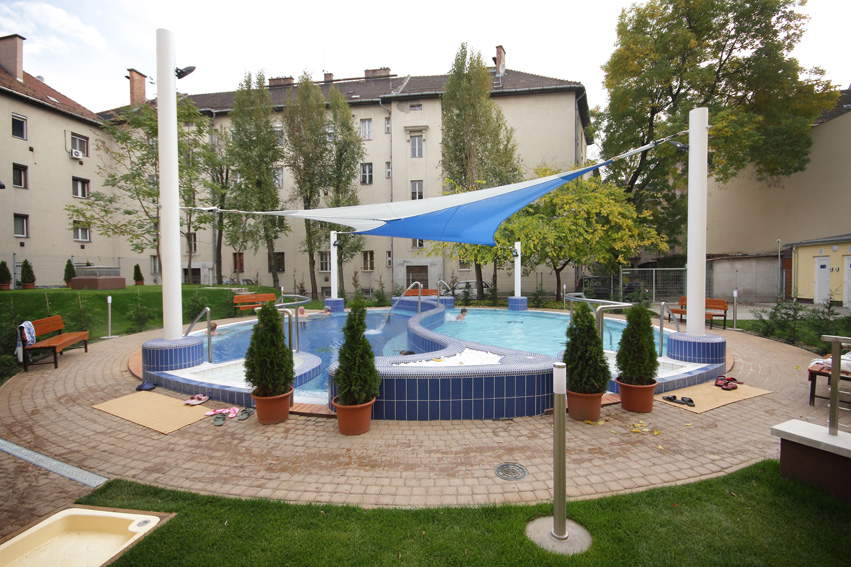
Stop that is definitely worthwhile. First thing to note is that there is men’s and women’s admission on alternate days or at different times so before you go check on the site for entry arrangements including those regarding the use of bathing suits or towels. No admission for children under 14 years of age. We are on the banks of the Danube at the foot of the Gellért Hill and here it is said to be the best water in the city perhaps precisely because it is also somewhat radioactive, unbelievable to say. Among the experiences to try is repeated bathing in a tub with 42-degree water (the hottest in Budapest) and then one with 14 degrees, and vice versa. Invigorating. The facility presents itself divided into two wings where on the right is the Turkish bath, the oldest in the city (it dates back to 1556), while on the left is the more modern part with a swimming pool and a wellness area with a rooftop pool from which you can enjoy a fantastic view of the Danube. The charm and style of the Ottoman rule era can still be felt today in the architecture and geometries of the pools and baths.

Speaking of Ottoman influence, let’s talk about the Király baths named after the family that owned the building (Hungarian for “king”): Turkish baths built in 1565 by the Pasha of Buda Arslan. They have no thermal spring of their own from which to capture water and draw from the waters of the Lukács. This is because the Ottomans decided to build these baths within the city walls so that they could be used even in case of siege. The most distinctive environment is the main bath topped by an octagonal dome and smaller thermal pools.

Considered the most beautiful in Buda, the Turkish Baths built by the Ottomans in the 16th century were the Veli Bej Baths. Currently surrounded by classical-style buildings it is owned by the adjacent hospital.

The Palatinus are 100 years old and are located on Margaret Island in the middle of the Danube, 2,500 meters long and 500 meters wide with a total area around one square kilometer.The Palatinus are the most suitable for family outings with children: 11 pools of various kinds including those equipped with water games. In addition to the Palatinus on the island there is a park (with a small zoo), so we are in the middle of the city but it is as if we were somewhere else, with two UNESCO-protected sites: the “Musical Fountain ”with its spouts that move to the rhythm of classical music; and the 57-meter-high octagonal tower water reservoir built in Art Nouveau style in 1911. The spa has been in operation since 1919, and the large 5,000-square-meter pool and two smaller pools were built in 1921. Until World War II, the large pool was the largest in Europe. Given the popularity of visitors, an expansion completed in 1936 was decided upon, by István Janáky and György Masirevich, with the idea of being able to accommodate be 10,000 people. “The new building,” as explained on the website, “was characterized by clean, almost minimalist, powerful Bauhaus elements. The modern, functionalist building was completed quickly, in less than a year (1937). The splendor of the building is attributed to the spatial design, the alternation of compact and perforated surfaces, and the harmony of tastefully placed works of art.” Interventions followed in the second half of the twentieth century until the last one in 2017 with , among other things, slides, soccer fields.
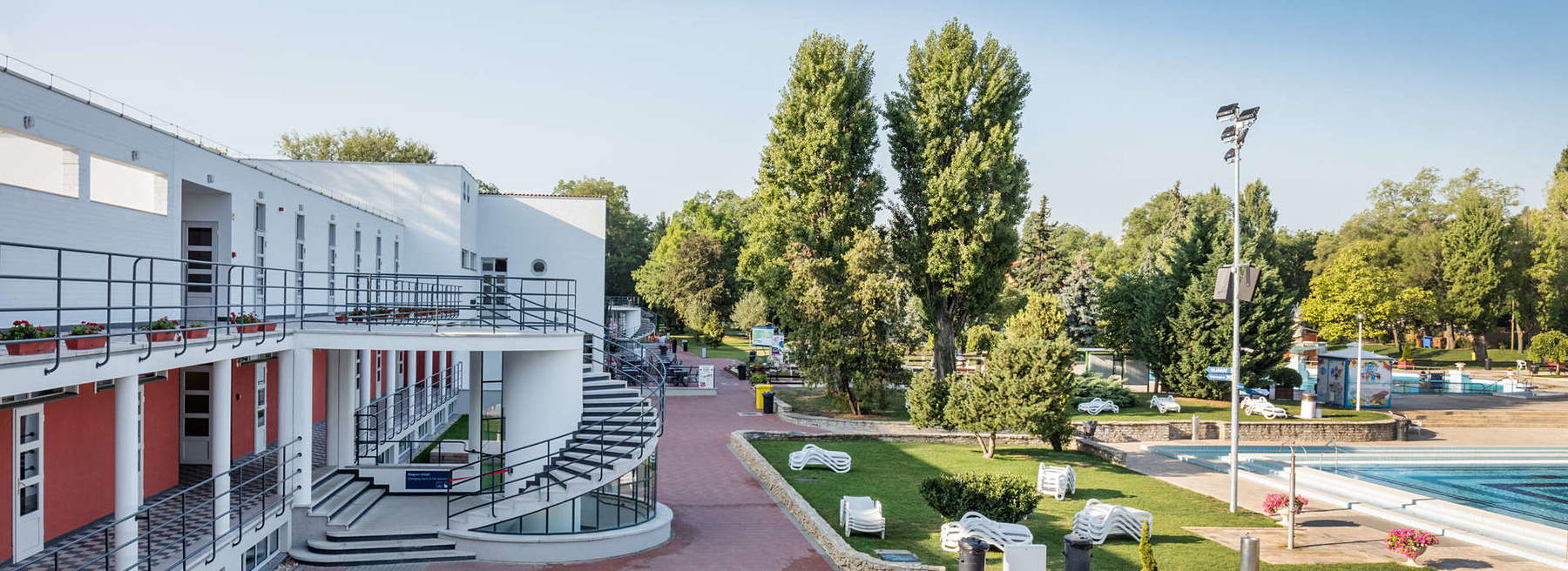
Of particular note is the Csillaghegyi thermal bath s set in a beautifully manicured natural setting that frames and supports the various areas with water. It is the second open-air bathing establishment in the city and here a pool was first equipped with a mechanism to create waves, futuristic for the time. In 2017, an archaeological find was unearthed: Roman tombs, one of which was richly decorated. Three of the restored bronze sculptures are already on display in the Aquincum Museum.
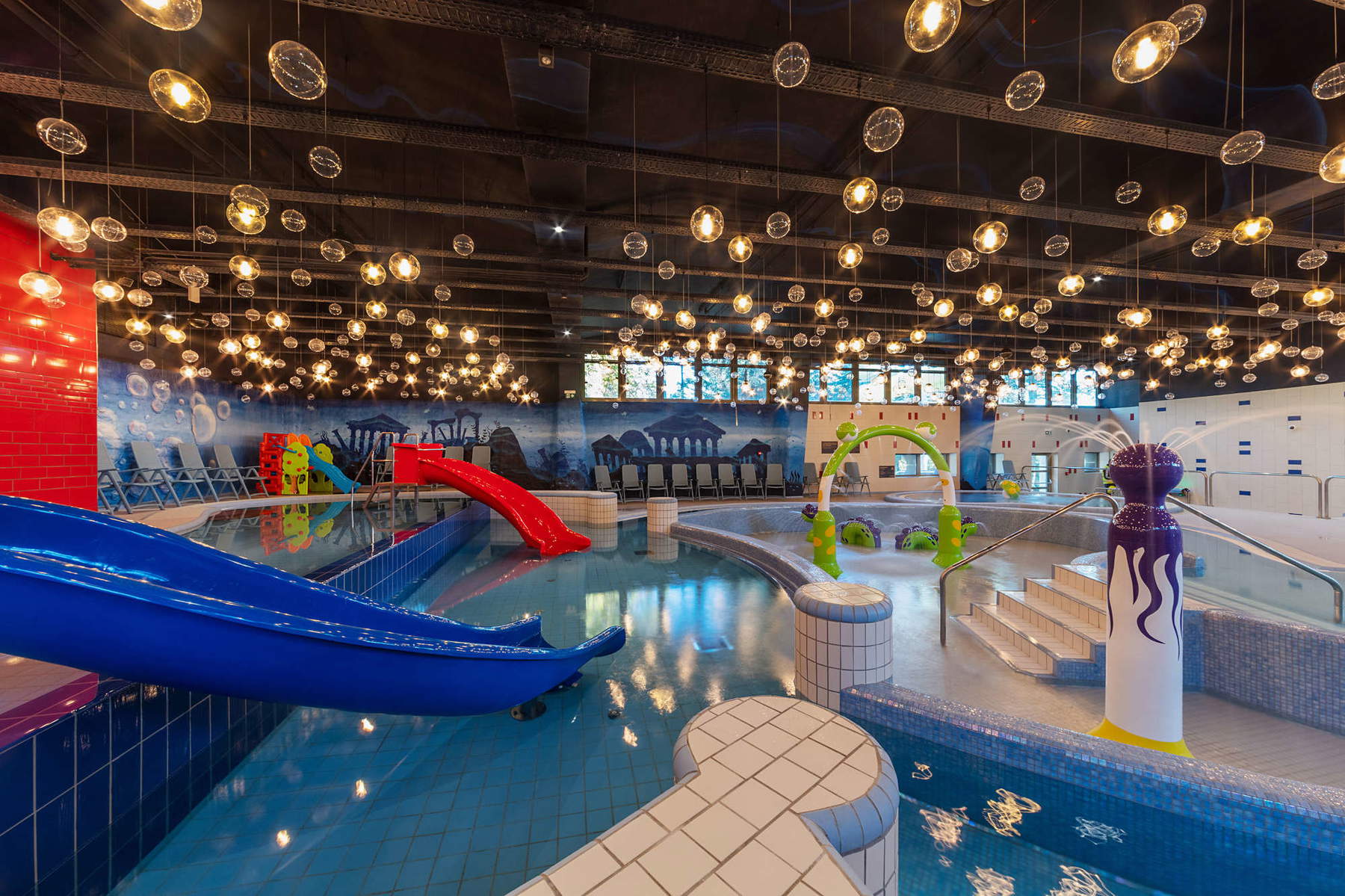
Not satisfied with how many they already had, the latest baths were built in 1989: the Paskal Baths. More modern and thus lacking the ancient charm of past history, they were expanded in the 2000s.
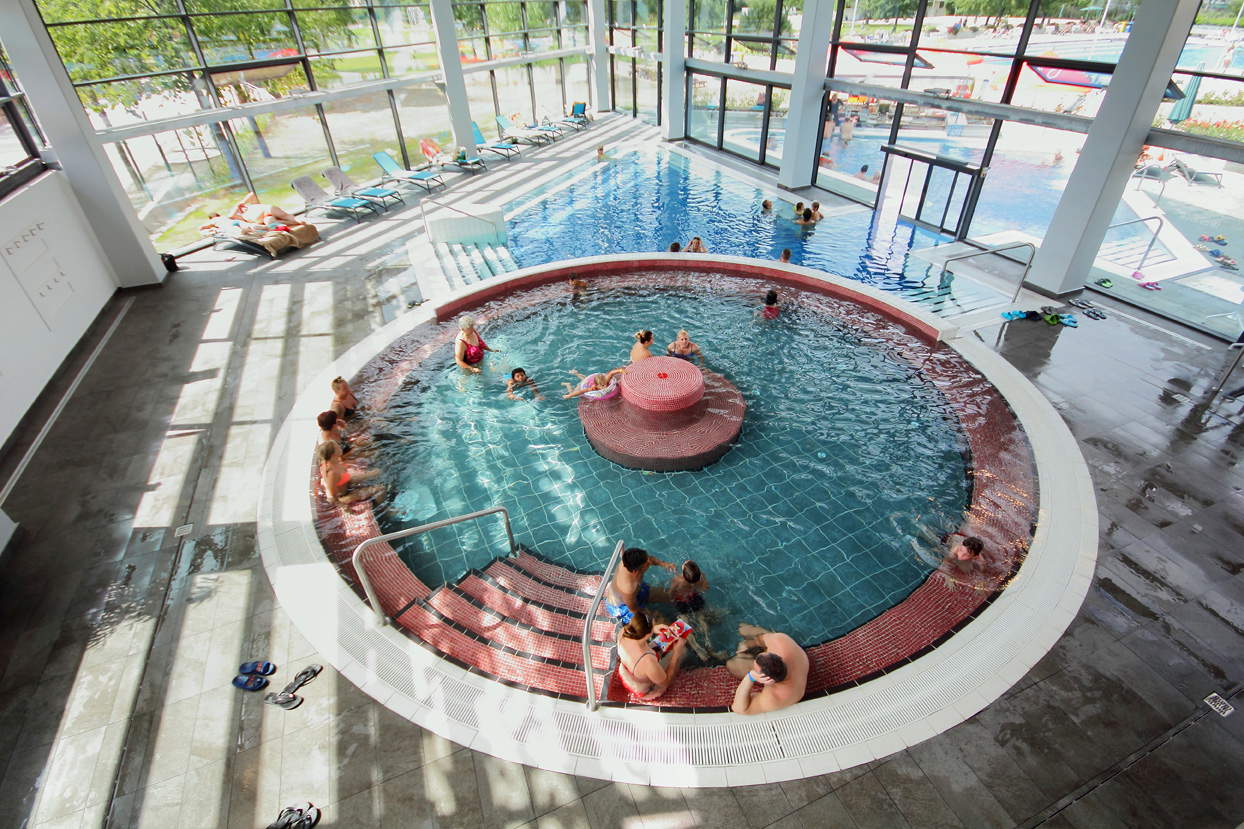
 |
| Budapest spas, which ones to visit: 10 baths not to be missed |
Warning: the translation into English of the original Italian article was created using automatic tools. We undertake to review all articles, but we do not guarantee the total absence of inaccuracies in the translation due to the program. You can find the original by clicking on the ITA button. If you find any mistake,please contact us.